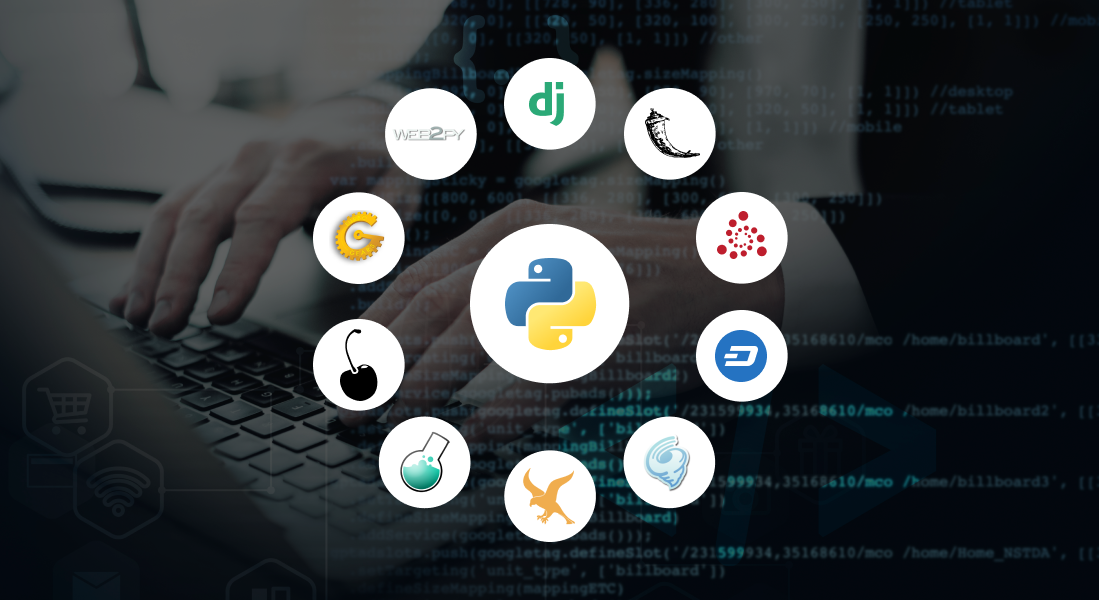Crypto Wallet App Development: Features,...
April 14, 2025

Believe it or not, it is the most flexible and trending Python programming language right now. It is simple to understand, has tons of useful tools, and is so powerful due to its model frameworks. The frameworks above are what differentiate the language from the rest and are likely to make it extremely common in 2024. Python isn’t just a powerful language, thanks to a variety of web frameworks.
Thus, it is not only easy to read but also to use it. These frameworks are complete with all the necessary tools that the developers of thriving businesses need, no matter whether that business is a small startup or a large corporation. This article presents the most popular Python web frameworks that you should definitely look into in order to help you realize the application of your dream in 2024.
Python is really an agile technology because it fills the gap between regular programming and lenient scripting tasks, making it a perfect option for many developers. It’s great to develop an app, either small for personal use or a big system for companies. For example, Python can deal with repetitive tasks and employ intelligence (such as machine learning and AI into your apps).
The power of Python in web development astonishes me as it works well with all the major web browsers, operating systems, and digital platforms. This implies if any application has been made using Python, it would be easy for many people to use it without encountering any problems. Furthermore, utilizing the power of Python freeware will even make things better as it equips developers with the ability to build highly scalable, efficient, and safe applications. This is why many web developers prefer Python, especially those who want to try out new ideas and innovations. This makes Python a favorite among many developers.
Learn | Python Environment Variables: A Step-by-Step Tutorial for Beginners
Python web frameworks are divided into three main types: full-stack, micro-framework, and asynchronous. Each type serves a specific set of goals and tastes of the developer.
If you think of a full-stack framework as a toolbox with all the supplies you need to create a 100% functioning website or app, you’ll be able to understand how the framework can help you. They help develop forms to organize how data is displayed on the front end and presented or managed on the back end. If the objective is to have all angles of the web development framework fully covered, then full-stack frameworks are the best solution.
Microframeworks are more limited as they do not come with many pre-defined features such as form validators, or tools for dealing with databases. They’re perfect to make a project quick and easy without a bunch of additional stuff that you won’t use. Similarly, DIY kits offer the ideal solution for custom creations. They also provide you the option to write a lot of your own code.
They are the recent newcomers in town. Asynchronous frameworks are more or less a development of microframeworks meant to keep up with multiple tasks at the time, such as in live apps or chat apps. They use Python’s Asyncio library to manage this. This property makes them a perfect fit for apps that need to process things instantly without lagging down.
As you become aware of these categories you might be able to choose the right framework for your project based on what it is expected to provide.
Python continues to be a top choice for web development, thanks to its powerful and versatile frameworks. Whether you’re building simple applications or complex, enterprise-grade solutions, there’s a Python framework that fits the bill. Here’s a list of the top 10 Python web frameworks to consider using in 2024:

Django is a highly popular full-stack Python framework known for its “batteries-included” approach. It follows the Model-View-Template (MVT) architecture, making it ideal for developing complex data-driven websites quickly. Django offers robust security features that help prevent attacks such as SQL injection and cross-site scripting, and its built-in components support everything from form generation to admin interfaces.
Flask is a lightweight and flexible microframework that is perfect for small to medium applications. It does not require particular tools or libraries and has no database abstraction layer or form validation built in. However, Flask is extendable and can add these features through third-party libraries if needed. Its simplicity and flexibility make it ideal for projects with unique requirements that more opinionated frameworks might not support.
Pyramid is great for projects that need to scale with time. It is flexible enough to start as a simple app but powerful enough to scale to complex applications. Pyramid supports various templating engines and databases through its extensive plug-in system, making it adaptable to changing project requirements.
Dash is a Python framework for building analytical web applications. No HTML, CSS, or JS knowledge is required—all you need is Python. It’s particularly useful for data scientists who want to create interactive, web-based dashboards that display complex visualizations.
Tornado is known for its high performance. It is designed for applications with lots of open connections, making it ideal for WebSockets or long polling. It’s an asynchronous framework that can handle thousands of connections simultaneously.
Falcon is a framework geared towards building APIs and app backends with high-performance needs. It’s designed to be lightweight and highly optimized for speed, making it suitable for handling large numbers of requests.
Bottle is another microframework similar to Flask but even more lightweight. It is a single-file module and has no dependencies other than the Python Standard Library. Bottle is particularly well-suited for building simple applications, personal projects, or for prototyping quickly.
CherryPy allows developers to build web applications in much the same way they would build any other object-oriented Python program. This results in smaller source code being developed in less time. CherryPy includes a web server and is easy to run multiple HTTP servers at once.
Web2Py is a full-stack framework that includes everything needed to build database-driven web applications. It comes with a web-based IDE and is designed to guide users from setup and development to deployment without needing any third-party tools or libraries.
Learn | Python Concurrency: Multithreading and Multiprocessing
TurboGears allows starting with a simple setup and scaling up to a full-stack solution as needed. It supports multiple databases and data exchange formats, and includes tools for front-end and back-end services, making it highly versatile for complex web applications.
Each of these Python frameworks offers unique features and benefits, making them suited for various types of web development projects. When choosing a Python framework in 2024, consider your project’s specific needs, complexity, and the expertise of your development team.
Choosing the right Python web framework for your 2024 project is about more than just the features it offers. Each framework has its special functions that fit different kinds of web projects. To pick the best one, you should look at things like how secure it is, how well it performs, if it has good community support, and if it fits well with what you want to achieve in the long run.
By carefully considering these factors alongside your business needs, you and a Python Development Company can identify the most reliable and effective framework for your application. The right choice will not only simplify the development process but also ensure your web application scales smoothly and remains manageable over time, setting you up for long-term success.